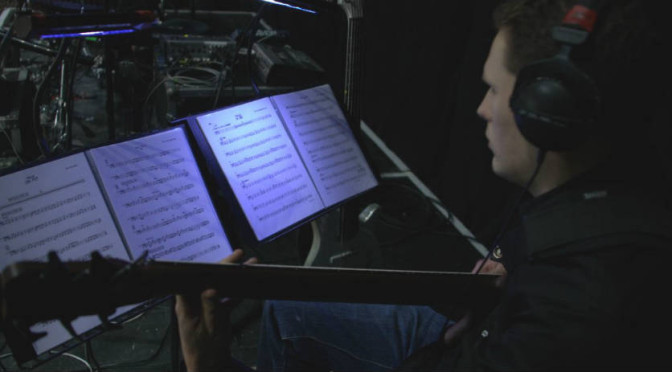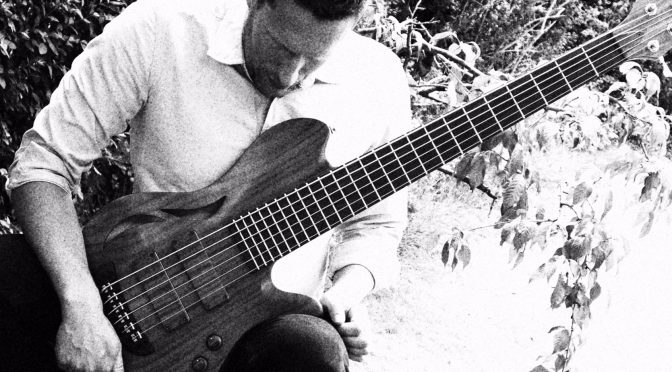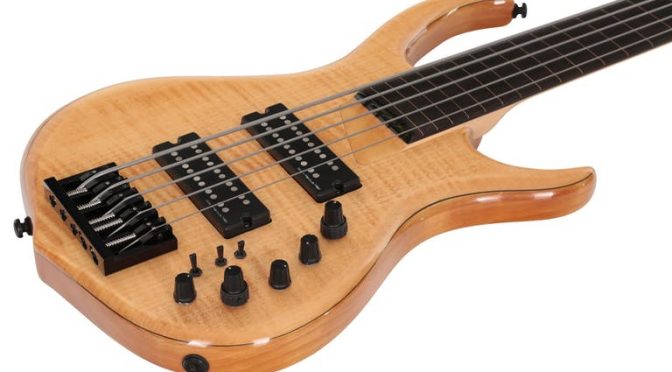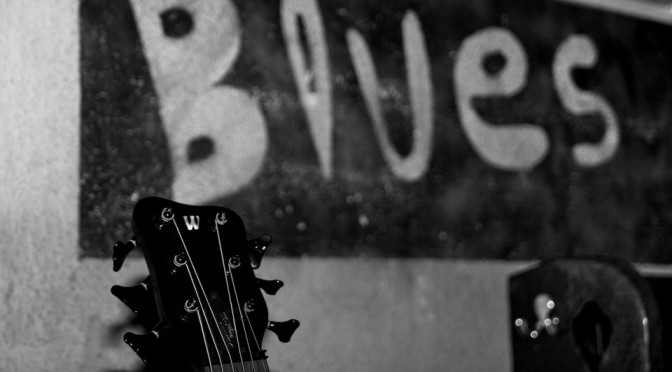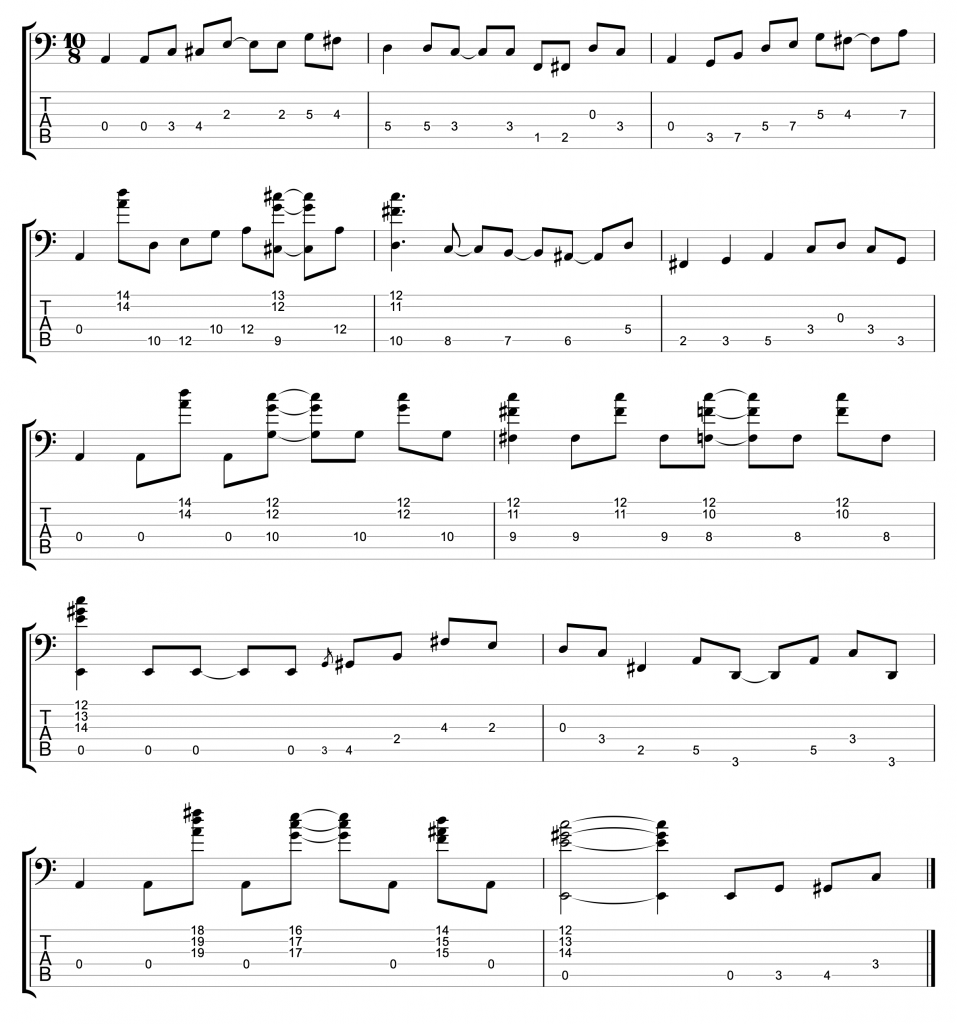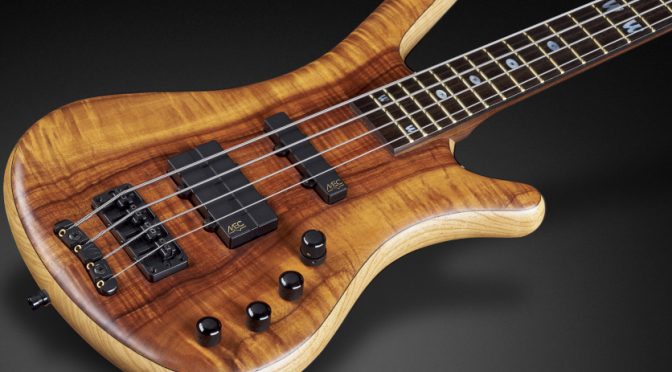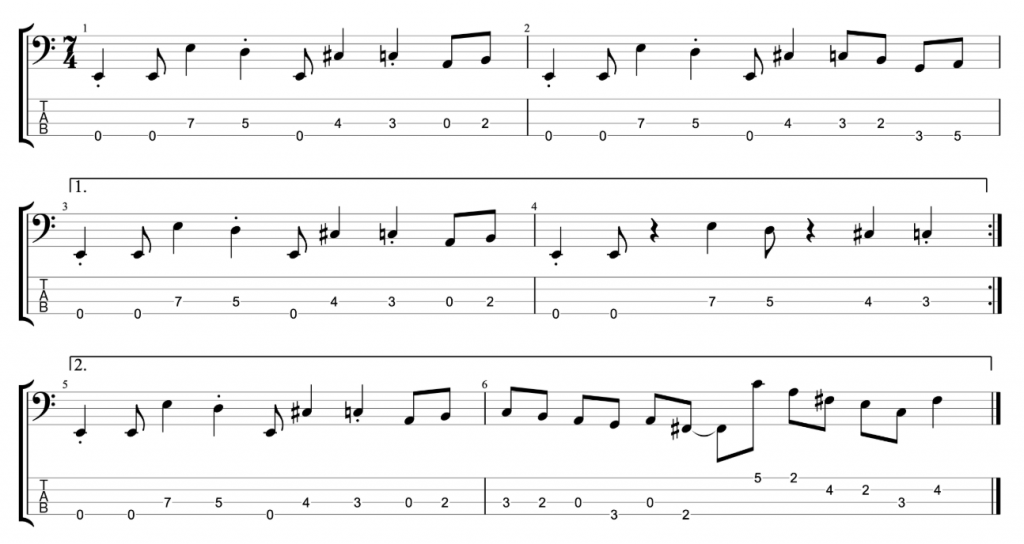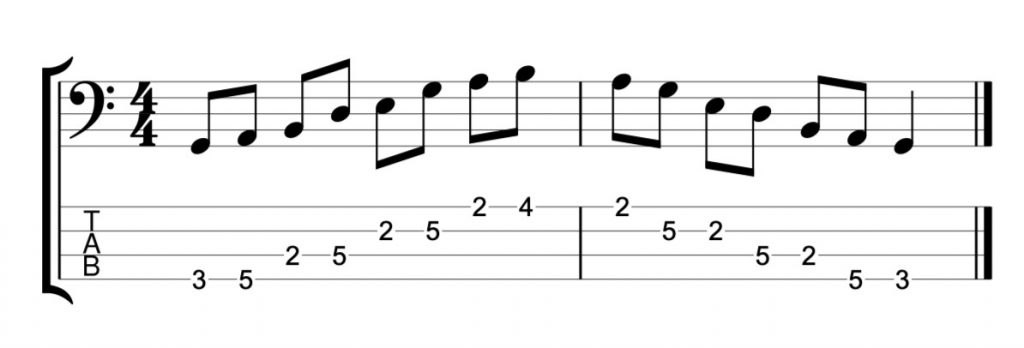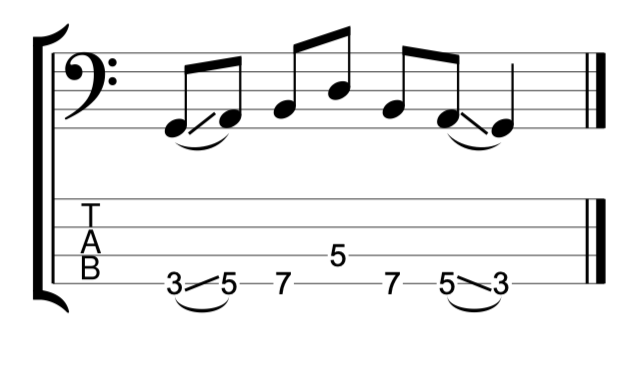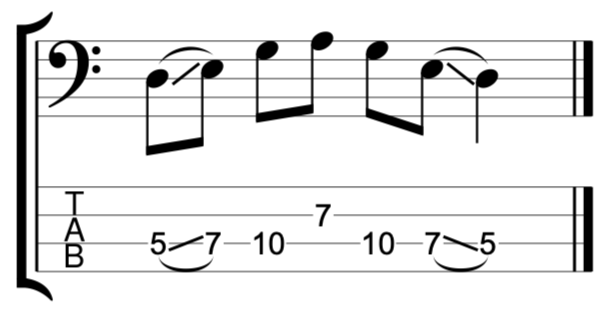Learn a Linley Marthe Bass Groove with TAB – Bass Practice Diary – 16th March 2021
Recently I was going through this concert on YouTube. It’s a trio led by the amazing jazz pianist Mario Canonge from Martinique featuring one of my favourite bass players, Linley Marthe. I’ve been watching the video and stopping at various points to transcribe some of the bass parts and I thought I’d share one of these parts with you. This little groove that I’ve worked out only happens once, very quickly.
The Groove

He doesn’t play it repeatedly as I have in this video. You can find the moment that he plays it at 1 hour 39 minutes and 34 seconds. He plays it once, then he starts to play it again with a little variation before he goes elsewhere. There are so many great little moments like this in the concert. If I had the time I could probably spend a lot of hours going through this and practicing different parts.
There are a few things that you need to practice if you are going to get this groove right. First you need to get the triplet 16th note feel. Meaning that the notes written as 16th notes should be played with a shuffle feel. Then you need to look at the techniques that he uses to play the muted notes. As I mentioned in the video, he only plays three different notes in the groove, G, F & D. However, it’s the addition of all the muted notes that really brings the groove to life. The muted notes are played with a combination of raking the strings with your right hand index and middle fingers, and a percussive tap with the left hand. You can watch the video for my specific breakdown of these parts.
The fact that the groove contains relatively few different notes makes it potentially very versatile. Clearly the root note is G, but you could use this under a G7 chord, a G minor 7 chord or even some kind of G sus chord.
Linley Marthe
I consider myself extremely fortunate to have seen Linley Marthe perform live with Joe Zawinul. Zawinul was known to have impeccable taste in bass players. If you look back through his career, both with Weather Report and the Zawinul Syndicate, he seemed to always have his finger on the pulse of who was the next great young bass player to be coming through.
I vaguely remember before the gig hoping to recognise one of the famous Zawinul bass players that I knew. Richard Bona or Victor Bailey for example. I think I was slightly disappointed when someone I didn’t recognise came on stage. However, my brief disappointment was very quickly turned into amazement as the young bass player from Mauritius proceeded to absolutely blow me away.
Since that concert, I’ve seen him live a couple more times. Once in a duo with the drum legend Paco Sery and once in a band called Ozmosys featuring Omar Hakim, Rachel Z and Kurt Rosenwinkel. Each time I see him, he amazes me with the scale and breadth of his musicianship. He is incredibly inventive with his technique. He seems to have a hundred different ways of striking the strings with his right hand, each one creating a different sound. And it’s not just his techniques that make him brilliant. His timing and groove are just incredible, and if you listen to the concert linked at the top you will hear that he has an incredible ear for harmony, melody, improvisation and the jazz language as well.
I’m trying to find ways to feature the bass players that inspire me in my videos. And for me, Linley Marthe is right up there as one of the greatest bass players of all time.

